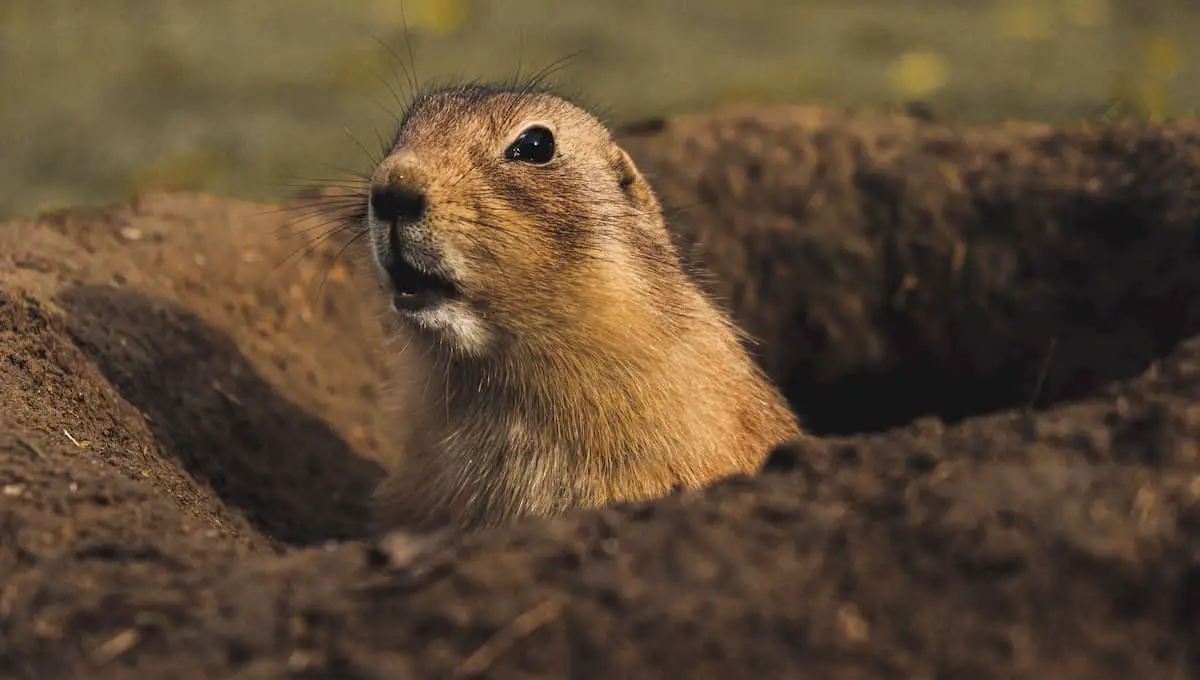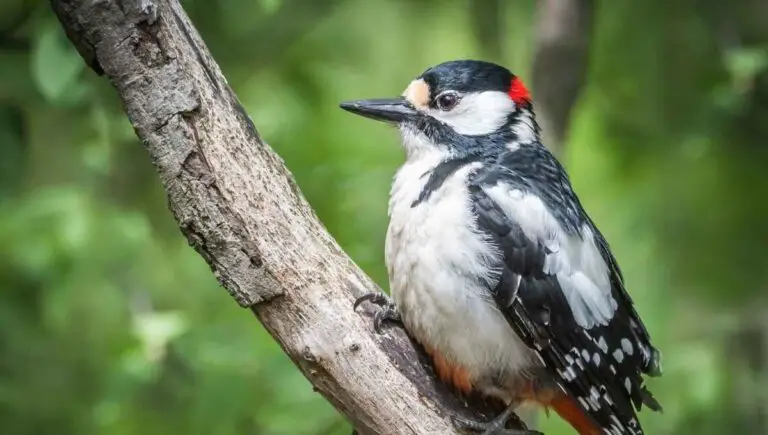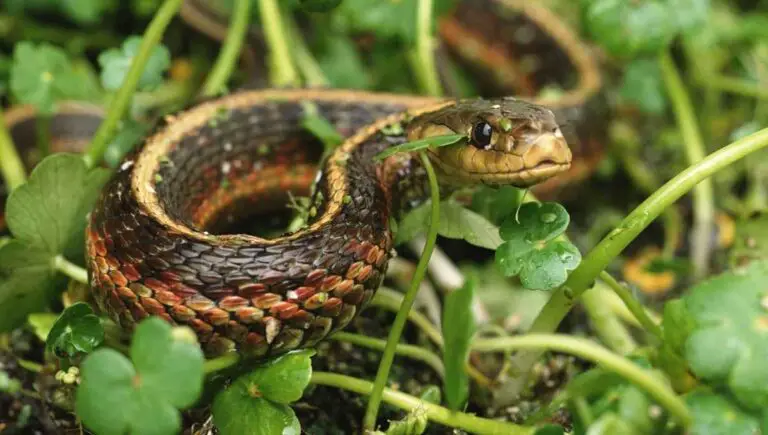How to Stop Animals From Digging Holes in Your Yard

Waking up in the morning to find that holes have mysteriously appeared overnight in your manicured lawn is crushing. Do you want to learn how to stop animals from digging holes in the yard to save your garden?
A host of animals could be responsible for causing the mess, and the principal reason for seeing the mounds is food and shelter. Various species dig and burrow because they’re hungry or require protection from predators.
Finding methods to stop these garden pests from colonizing your yard is by no means guaranteed, especially when you’re dealing with smart, particularly dangerous, or large animals that are difficult to trap or trick, like raccoons, for example.
The first step to stop animals ruining your yard is by identifying what exactly is digging up your lawn at night, which will help you to get rid of the animals digging holes in your yard for good.
In this article, we’ll discuss the common culprits who dig and burrow, take a look at the holes in the lawn and match them to the guilty parties, and find true-and-tested methods that may help to remove these animals permanently.
What is Digging in My Yard?
Before employing various removal techniques, you’ll first need to discover who the garden invaders are. Unfortunately, there are several that could be taking up residence below the surface.
The most common pests that could be causing the disturbance include moles, voles, raccoons, squirrels, foxes, badgers, skunks, but to name a few.
Your backyard offers plenty of food sources for ravenous animals, which is why you’ll see them return time-after-time. Unfortunately, wildlife isn’t known for their table etiquette and don’t clean up after themselves after feeding.
However, use the mess left behind as clues to determine the animal you’re dealing with. Smaller holes in lawn overnight could point to smaller mammals, such as voles or chipmunks. At the same time, a shallow hole could be skunk holes in the lawn while an extensive tunnel system is indicative of moles.
Identifying the Holes in Your Yard
This section identifies the different species that dig, and the distinctive ways in which they burrow through your garden in search of grubs, insects, plants, or whatever food source that comprises their diet.
Skunks
Knowing that skunks are invading your garden is alarming for a variety of reasons. Firstly, the spray they release when threatened is a powerful and incredibly challenging scent to remove entirely. Secondly, skunks carry rabies, which is a disease that is spread through biting.
These two reasons alone are enough to discourage skunks from entering your property. Additionally, their forming skunk holes in search of food is yet another reason to remove them.
Despite being large garden visitors, skunks dig small holes in yards, and this is because skunks are animals that burrow with their noses and front claws.
Because skunks dig with their noses and front claws, the holes that are formed are shallow with loose soil around the edges.
Skunks love feasting on grubs, which are the larvae of a variety of beetles. So one effective natural skunk repellent is to eliminate their food source: grubs, which is something we’ll discuss later.
Raccoons
Raccoons are intelligent pests that are incredibly challenging to remove. They also have good memories and will remember where there are good grub supplies, meaning they’ll probably return for their next meal if your garden offers their favorite selection of treats.
At the same time, it’s dangerous to approach raccoons who act defensively and are hazardous to humans and pets if they have rabies. So it’s best to call in wildlife control if you think your yard has become a raccoon’s playground.
One surefire way of knowing if your diggers are raccoons is to identify raccoon holes, which are unmissable. In our article about animals found in attics, we discussed how destructive these species are. They tear up things in their pathway to gain access to your home.
Similar tactics are used as the one described above when it comes to raccoons carelessly plowing the yard for food. Using their hands, raccoons tear up and flip through mounds of soil, sand, and grass, picking out food from your turf. If you wake up in the morning and haven’t recently cultivated your yard, the chances are that you’ve had visitors of these kinds in the night.
How do you deter raccoons? It’s not easy, but there are ways, such as removing grubs from your lawn, as well as keeping your yard clean, i.e., ensure that the lid of your trash can is sealed correctly.
Moles
Moles are some of the most destructive burrowers around, so if you’re pondering “what is digging holes in my yard?” it could be one of these guys.
Unlike various other types of diggers, moles dig from the ground up, so you won’t see visible holes but mounds scattered across your yard. This is something that is challenging to control. At the same time, moles are fossorial, meaning they live their lives burrowing underground. This makes them different from other species, who may only dig at specific times of the year for grub and shelter.
Two types of moles could be inhabiting your yard right now, the eastern mole and the star-nosed mole, which is essential to note if you’re trying to identify what’s digging up your garden at night.
Eastern moles are known to construct an interconnected tunnel system closer to the surface of the soil, while star-nosed moles dig deeper, especially when it’s warm, to create air vents to cool down.
So if you want to know “how deep do moles dig”? It depends on the mole you’re contending with, where star-nosed moles are located six inches or more below the surface.
What times of the day are moles most active? They do their best work at night. However, mole activity also occurs during the day.
Some people turn to chemical repellents or baits used on rodents to treat their mole problem. However, the risks involved in using rat poison to kill moles or repellents designed to eliminate moles is that your pets could dig up and ingest these instead. Therefore, if these poisons can kill moles, curious dogs that dig are also in danger of ingesting lethal chemicals and dying as a result.
We’ll have a look at safe, home remedies and natural methods to safely remove and discourage garden pests from destroying your lawn later.
Voles
Next to moles, voles can attack your garden with vehemence. If you want to know what a vole hole is and how it can be identified, read on.
It’s essential to know your enemy, so to speak. Voles are part of the rodent family and are also referred to as field mice.
However, unlike mice, these creatures are stouter with shorter tails.
The same as moles, there are two types, pine voles, and meadow voles. These members are extremely active creatures that burrow underground day and night.
They feed on a wide range of vegetation found above and below the ground, including grass, roots, and fungi, and various seeds and fruits. Because they’re herbivores, voles are huge pests to have around that can destroy your prized plants and trees.
If they’ve found their way into your yard, they’re more likely to seek dense vegetation to hide from predators. Therefore, if you notice pathways or tunnels through your grassy areas, it’s probable that a population of voles is living underground.
You must find ways to deter voles once you know they’re around because they do multiple rapidly, thus making the task of removing them impossible later on.
From setting traps and installing barriers to eliminating their food source or using chemicals, there are various ways to remove these pests. Combine multiple solutions to ensure the fastest way of getting rid of voles.
Rats
Do rats dig holes in the lawn? Absolutely.
As another member of the rodent family, rats will also burrow underground to reach their food sources and escape predators.
Rat burrows are typically located near dense vegetation and under bushes. Because rats are creatures of habit that travel along the same paths, it’s not hard to identify these holes. Additionally, they leave behind a greasy residue from their coats,
How do you get rid of rat holes in your yard? There are several things you can do, ranging from filling in these holes to removing their primary food sources.
Chipmunks
Chipmunks are known burrowers that prefer the cool environment the soil provides, and they’re also extremely neat diggers. You’ll know chipmunks are or have been around by the presence of small, clean, and round holes shaped like silver coins.
So if you’re wondering what animals make small holes in the ground, it could be these animals that live in holes in the ground.
Rabbits
As cute as they are as pets, wild rabbits are frustrating pests to have around. Having an army of rabbits digging warren holes is nothing to joke about because the truth of the matter is that rabbits can destroy lawns.
They’re hugely messy, pooping all over your garden, and their presence could attract predators, which adds to the variety of animals you don’t want to live in your yard.
Snakes
Their absence of limbs means that household serpents don’t burrow underground. However, that’s not to say that all snakes don’t, because some species can.
However, it’s entirely possible for snakes to live in holes as slithering serpents are known to inhabit various types of environments, especially during winter, where they seek out hiding spots that provide warmth and camouflage from predators.
And, adding to the variety of food in your garden, ranging from slugs and insects to small, burrowing mammals, your garden is akin to a candy shop for children.
How do you get rid of a snake hole found in your garden? If you aren’t sure whether you’re dealing with a venomous serpent or not, it’s best to keep your distance while calling the wildlife services to relocate it.
If you’ve positively identified the snake, you can cover up the hole. Snakes are attracted to cool, dark areas. However, if the openings are blocked up, they won’t return.
What Animal Digs Holes in the Yard at Night?
People often wake up to find their lawn destroyed by nocturnal creatures, wondering “what animal is digging holes in my yard at night?” Unfortunately, it’s hard to quickly identify the culprit because multiple borrowers are most active while you’re sleeping
These animals include but aren’t limited to moles, badgers, chipmunks, foxes, gophers, voles, rats, and skunks, but to name a few. Do armadillos also play a part in tearing up yards? Unfortunately, they do, and you won’t know that they’ve been skulking around until morning.
Apart from apparent signs that these creatures of the night have been around, there may be other clues that point to a wild animal’s presence, including pungent scents and leftover food.
For example, if skunks and raccoons have been patrolling the same territory, they may fight primarily since raccoons are known to be vicious, backyard bullies. Therefore, a skunk will spray to defend itself. At the same time, while foxes are less frequent yard visitors, you’ll know that they’ve been in the vicinity if you see bird or animal remains outside the entrance of their dens.
Keeping Animals Out of Gardens Naturally
As we’ve already mentioned, grubs are the larvae of beetles which feed a variety of animals and might be what’s attracting wildlife to your yard. Therefore, one way of removing rats and other pests out of your yard naturally is to make it as uninhabitable as possible by eliminating these grubs. So, how do you kill grubs?
However, take note of the following before getting started. Eliminating grubs to discourage moles will be ineffective because a mole’s diet comprises insects, worms, and other invertebrates in your yard. Larvae aren’t a mole’s primary food supply of food because they only make up 20% of their diet.
At the same time, your garden is home to over 20 000 grubs, making it impossible to remove them all. Therefore, before you venture on, your aim should be to reduce your grub population, not remove all of them.
That said, removing grubs won’t just stop your digging problem but will also improve the condition of your lawn. Grubs are a gardener’s worst nightmare that wreaks havoc in your yard, therefore having them removed is beneficial for a variety of reasons.
Are There Animals That Live Underground but Don’t Burrow?
Primarily possums are blamed for being the critters responsible for ruining your yard. While they are keen diggers and do scratch around occasionally, the potentiality of possums digging holes in the ground, especially deep ones, isn’t as likely as other critters.
That said, while they won’t burrow deeply to form dens, they will move into abandoned holes once the previous residents have vacated.
Removing grubs naturally
Nematodes
Applying beneficial nematodes may help with your grub problem and is said to be a highly effective method of pest control.
But what are nematodes exactly?
Nematodes are microscopic worms that hunt soil-dwelling insects, like grubs, and then invade the species and release a toxin that results in certain death. Once the host is dead, the worms will reproduce in its carcass.
Nematodes may be deadly to specific insects, but they won’t negatively impact the soil, nor are they dangerous to humans. For these reasons, and because adding nematodes to the earth is a cheap and effortless endeavor, many avid gardeners turn to nematodes to manage garden pests.
If you’re concerned about whether it’s too late to treat grubs, it depends on the time of year. The ideal time is at the start of fall when the grubs are newly hatched and small, making them easier targets for your worms but can still be removed in spring too. Therefore, the best month to treat grubs is from September to November.
Be warned that once grubs are fully grown, they will penetrate deeply in the soil, making them harder for nematodes to catch.
Control pests of the soil without using harsh chemicals – buy this Live Beneficial Nematodes Blend.
Soap Water
Does soapy water kill lawn grubs? Not necessarily, however, using soapy water is a natural method of deterring them because its soapy elements can smother them on contact, which is how dawn soap can potentially kill grubs.
So the lesson learned is this: this liquid solution prevents grubs and other pests from entering an area, but won’t kill ones already there, found in the soil’s inner-depths.
What Are Different Ways to Get Rid of Animals Digging in the Yard?
Depending on your animal invasion, removing grubs, while beneficial in some ways, might not address the issue at hand. Thankfully, there are other ways of keeping animals from digging in your yard, offering varying degrees of effectiveness.
Prevent Digging Damage
One method of preventing diggers from damaging your yard is to make it more challenging for them to do so. Therefore, seeding your garden regularly gives your lawn deeper roots, making it difficult for pests, such as raccoons, to dig it up.
Physical Barriers
Are you tired of repeatedly asking yourself “what is causing those small, round holes in my lawn?”. At the same time, are you wondering how you can fill the holes in your lawn and not worry about new ones appearing the next day?
Small physical barriers may keep away unwanted pests if it’s built correctly, keeping in mind that some garden visitors, such as moles, dig deeply. Therefore the barrier should be at least 30 inches deep and six inches out of the ground to be effective. While building these are labor-intensive, it may be what you need to scare off pests, who’ll clear off in search of food somewhere else.
If this physical barrier is your next DIY project, it’s better to use wire mesh and wire cages.
Once you’ve installed your barrier or fence along the perimeter of your yard, check up on it regularly to ensure that no critters have successfully dug underneath it. If they have, you will probably have to remove these, as well as other wildlife that has also used these pathways dug out by their burrowing friends.
Animal Trapping
Trapping is one way of physically removing unwanted animals from your garden, but the task does require a fair amount of stealth to perform. At the same time, you need to be doubly-sure about the critter you’re catching because traps are species-specific. Purchasing or building one only to have misidentified the animal, is a waste of time and money.
Call in wildlife handler if you lack the skills or expertise to remove the pest using traps.
Take a look at this HomGarden Live Animal Trap, suitable for various garden pests, including skunks, raccoons, and chipmunks.
Toxic Baits
Toxic baits can be useful, but only for the types of moles that burrow tunnels near the surfaces, and are therefore useless if you have moles that dig deep into the soil.
You’re more likely to catch gophers and voles with baits who frequently surface the earth. However, the problem with using baits is that they’re lethal for a variety of insect species, including the ones that are beneficial to have in your garden. At the same time, you don’t want curious dogs or unwitting children ingesting toxic substances.
At the same time, toxic baits intend to cause harm to their victims. If you’re an animal-lover, there are more humane methods you can employ, as we’ve listed mentioned above.
Modifying the habitat
Without water in the soil, burrowing animals will become dehydrated, until they eventually leave the underground, exposing themselves to predators in the process. This is something you should take advantage of if you want nature to take its course.
Are you wondering what animals eat voles and other burrowing creatures? Owls, cats, dogs, and snakes are some of the predators that keep garden pests in check. However, the underground is a refuge for their prey.
By not watering your garden, you are not only forcing out your unwanted guests but are removing them permanently by attracting predators.
However, it’s important to tread carefully while doing this, because you don’t want your home constantly invaded by predators on the hunt either.
While it’s not necessary the behavior you want to encourage with your pets, cats are known hunters and will sometimes bring in moles to show off their hunt. If still alive, don’t touch these creatures as they may be carrying diseases.
Vibration Devices
There’s contested debate about whether these work. Regardless of whether they do or not, the idea is to place the device at openings and scare the moles. These creatures will, in time, make their escape due to the intolerable vibrations.
Despite its pitfalls, which include only being effective in smaller areas, vibration devices are one of a few removal methods that don’t endanger the environment or the pest. At the same time, they’re not dangerous for pets or children, because once they’re inserted into the ground, it’s challenging to pull them out again. Lastly, they’re easy-to-use and require minimal effort.
Bob’s Best Solar Powered UltraSonic Repellent deters rodents and moles.
Keep Fallen Fruit Off The Ground
This may only apply to you if you have a vegetable garden or fruit trees, but make sure you cultivate your plants often and don’t leave fallen fruit on the ground.
Certain pests, specifically raccoons whose diet includes berries, will be lured to your property by the scent.
Other Non-toxic Strategies
A mixture of castor oil and soap is a disagreeable smell for various types of underground dwellers, so it’s good to use when you aren’t sure which creatures you’re fighting with/.
Spray areas damaged by these creatures regularly may convince them to leave by making the habitat as inhospitable as possible.
Donaldson’s Farm Castor Oil gets rid of moles, armadillos, and gophers.
Another recipe for revenge is using dawn dish soap mixed with water to get rid of burrowing animals.
Are Small Dirt Mounds in the Yard Ever Beneficial for My Garden?
While seeing holes in your yard (with or without mounds) is disheartening, and, understandably, you want these creatures removed immediately to preserve your garden.
However, before you head to the garden to plant toxic baits or phone your local pest removal company, consider the benefits moles provide in nature.
Sure, you don’t want an uncontrolled population that completely destroys your backyard. However, a few moles digging about actually helps to aerate the soil. Not only that, but moles and other burrowing animals can help you to reduce your grub population, which can also annihilate your garden.
Recap: What Animal is Digging In My Yard At Night?
Seeing mounds of soil erupting from your lawn is not just highly frustrating, but the culprits can actually cause severe damage to your yard, not to mention the sight of them makes your property look unsightly. In this article, you’ve hopefully learned how to:
- Identify the suspected digger by taking a closer look at the holes left behind. A wide variety of critters could be responsible for causing small and round or large and deep holes in your lawn, so you must narrow the search by investigating the crime scene.
- Critters can sometimes be hard to remove, so you must find the right kind of removal method that is both humane and effective. We’ve suggested removing a popular source of food, grubs which is well-liked by various pests, creating homemade remedies to deter pests, using traps, or vibration devices, among numerous other methods that don’t require the use of chemicals. While not guaranteed, these methods could work for you if implemented correctly.
- If you want to use chemicals, baits can destroy some intended critters and vermin, but won’t work if you have a mole problem. While using chemicals, be cautious when using these around children and pets. Also, consider the environment and how toxins could negatively affect your soil.
- While you can remove some of these pests using various types of methods, you may have no choice but to call in the professionals, especially when you’re dealing with potentially dangerous animals.
- For all the damage they cause, some critters are beneficial for the ecosystem by aerating the soil and keeping grub infestations in check – bear them in mind before you find ways of eliminating them all.






